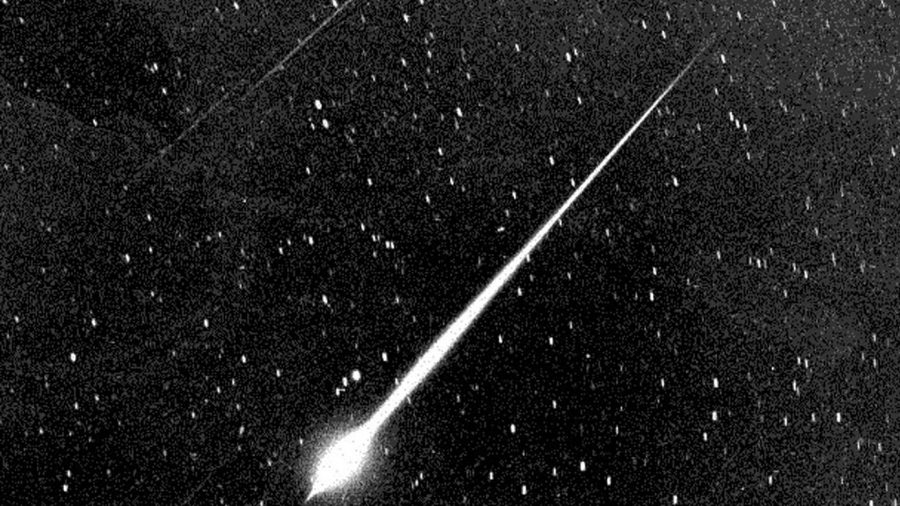Hurtling towards the earth 30 times faster than a rifle bullet, a 1,400-ton fireball exploded with the energy of 10 Hiroshima bombs in a blinding flash on the night of Dec 18, 2018, becoming the third largest meteor impact in modern times.
However, the explosion, 25 miles above the remote Bering sea, had no witnesses and was picked up only on NASA instruments, which had held onto their secret until now.
On March 8, meteor scientist Peter Brown pointed to the latest data release, which showed the massive explosion near the Kamchatka Peninsula, in Russia’s far-east, just before midnight.
“Object was 10 meters (33 feet) diameter, mass 1400T, and impacted with an energy of 173 kilotons of TNT,” Brown wrote on Twitter.
More Dec 18 airburst data from https://t.co/R81dQfvWpZ : object was 10m diameter, mass 1400T and impacted with an energy of 173 kT TNT, roughly 1/3 #Chelyabinsk. Impacts with this energy occur somewhere on Earth every few decades on average. #BeringSeaAirburst @westernu @IMOHQ
— Peter Brown (@pgbrown) March 8, 2019
The data was picked up by infrasound stations globally which were initially set up to detect nuclear blasts during the cold war.

According to Brown, the data was gathered from 16 infrasound stations worldwide.
More Dec 18 airburst data from https://t.co/R81dQfvWpZ : object was 10m diameter, mass 1400T and impacted with an energy of 173 kT TNT, roughly 1/3 #Chelyabinsk. Impacts with this energy occur somewhere on Earth every few decades on average. #BeringSeaAirburst @westernu @IMOHQ
— Peter Brown (@pgbrown) March 8, 2019
“It would have been quite spectacular,” Alan Fitzsimmons of Queen’s University Belfast, UK, told the New Scientist. “When you see these infrasound waves, you know immediately that there has been an impact or a large release of energy.”
It is unclear why the data was released so late.
According to the New Scientist the triangulation process requires combining pressure wave data from multiple monitoring stations, which could explain the delay.

It is the third-largest such explosion recorded in over a century, and the largest since the Chelyabinsk meteor six years ago.
“That was 40% the energy release of Chelyabinsk, but it was over the Bering Sea so it didn’t have the same type of effect or show up in the news,” Kelly Fast, near-Earth objects observations program manager at NASA, told the BBC.
“That’s another thing we have in our defense, there’s plenty of water on the planet,” she said.
The explosion over the Bering Sea was also picked up by U.S. government monitors that detect fireballs: their sensors pick up electromagnetic radiation in the form of infrared and visible light.
But both the Bering Sea and Chelyabinsk explosions are smaller than the earliest well-documented meteor explosion known as the Tunguska event, which occurred over Siberia in 1908. That air burst explosion from the 220 million pound rock, about 120 feet wide, flattened an estimated 80 million trees over an area of more than 770 square miles.
@NASA, @JHUAPL
The giant fireball hit on 18 December over the Bering Sea, a part of the Pacific Ocean between Russia and Alaska.
https://t.co/vpVyU6syJl— Makino (@Makino_Voyager) March 18, 2019
More Dec 18 airburst data from https://t.co/R81dQfvWpZ : object was 10m diameter, mass 1400T and impacted with an energy of 173 kT TNT, roughly 1/3 #Chelyabinsk. Impacts with this energy occur somewhere on Earth every few decades on average. #BeringSeaAirburst @westernu @IMOHQ
— Peter Brown (@pgbrown) March 8, 2019
There are very few well-documented stories of meteorite-caused injuries or deaths. According to NASA, the first known case of an extraterrestrial object injuring a person was in the United States.
“Ann Hodges of Sylacauga, Alabama, was severely bruised by a 8-pound (3.6-kilogram) stony meteorite that crashed through her roof in November 1954,” NASA’s website states.
For scientists who know where to look, the earth is pockmarked with evidence of large impacts.
“One of the most intact impact craters is the Barringer Meteor Crater in Arizona,” according to the NASA website. “It’s about 0.6 miles (1 kilometer) across and was formed by the impact of a piece of iron-nickel metal approximately 164 feet (50 meters) in diameter. It is only 50,000 years old and so well preserved that it has been used to study impact processes. Since the 1890s geologists studied it, but its status as an impact crater wasn’t confirmed until 1960.”
From The Epoch Times

